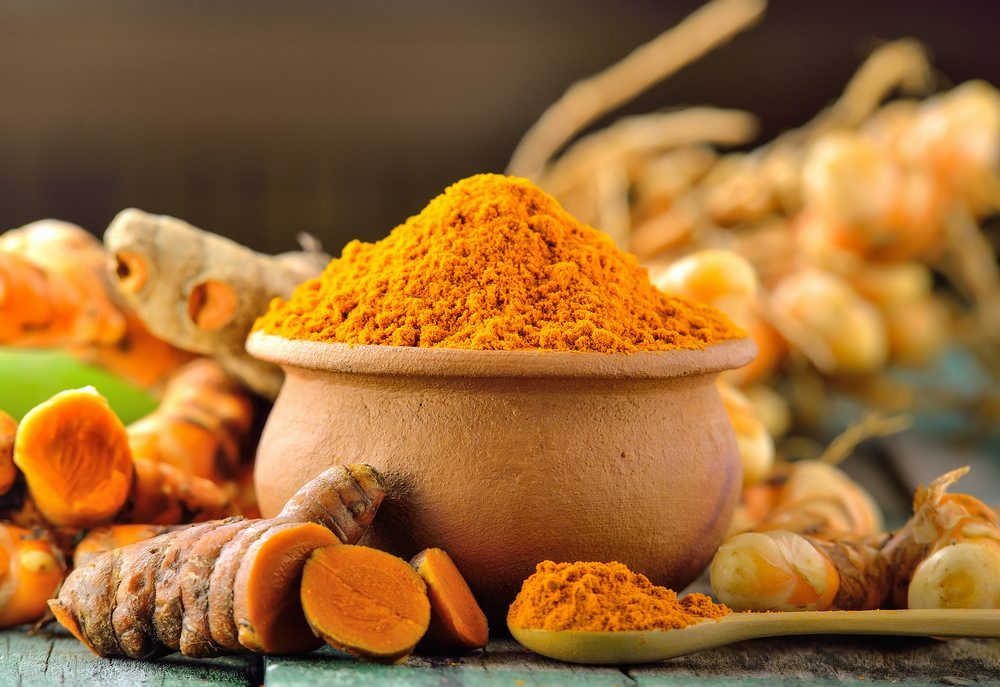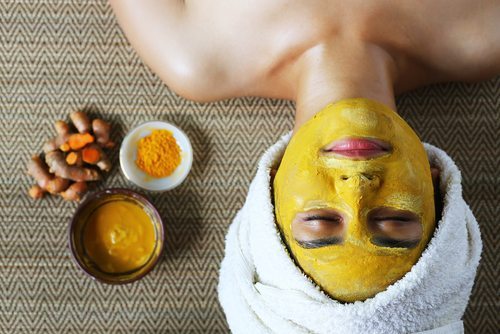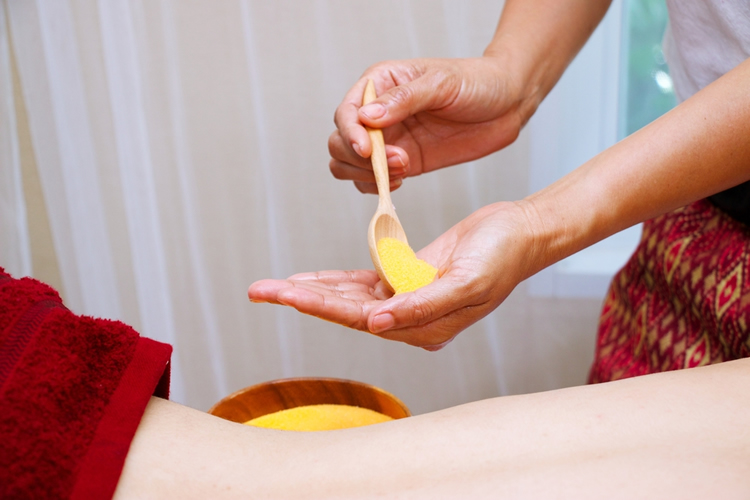“In all things of nature there is something of the marvellous.”
– Aristotle
Nature always finds its way back to us. With the rise of pharmaceutical products comes our interest of trying to get back to basics: going natural. One of which is the use of plants as remedy for health and here comes a great remedy: Turmeric.

What is turmeric?
Turmeric (Curcuma longa) is a wild plant which is richly found in South/Southeast Asia. It has been widely used in India for over 4000 years ago. It is an herbaceous plant belonging to the ginger family “Zingiberaceae”, which is native to tropical South Asia”.
Turmeric is not only used as a spice but is also used in religious ceremonies. It is also known as “Indian saffron” [1]. Perhaps, you heard of turmeric as the main spice in curry.
It has a warm, bitter taste and is frequently used to flavor or color curry powders, cheese, butters, and mustard. Its major active ingredient and principal coloring component is “curcumin” which is often used to color foods and cosmetics [2]. Within the last 25 years, there have been 3000 publications about turmeric, and scientific studies are still on-going [1].
Merits of turmeric
Personally, I believe in the wonder of turmeric. It serves a lot of purposes [1], including:
In Traditional Medicine
Turmeric is widely used in Asian countries’ (e.g. India – Ayurveda, Unani; China – Traditional Chinese Medicine; Pakistan; Bangladesh; Afghanistan) traditional medicine practice. Turmeric has many uses:
- Helps to strengthen overall energy of the body
- Relieves bloating
- Dispels intestinal worms
- Improves digestion
- Regulates menstruation
- Dissolves gallstones
- Relieves arthritis
- Acts as antiseptic for cuts, burns & bruises; cleanses & stimulates recovery of wound
- Exhibits anti-inflammatory effects
- Acts as antibacterial agent
- Purifies blood and improves its circulation
- Removes unwanted hair
- Treats respiratory condition (e.g. asthma) and expels phlegm
- Treats sprain and swelling
- Used in treating colon cancer and irritable bowel syndrome (IBS)
- Relieves skin condition
In scientific studies
There are many studies (in animals and humans) about turmeric; here are some of its benefits shown by research:
- Anti-cancer property
- Protects liver and heart health
- Helps to lower blood sugar
- Anti-arthritis
- Antioxidant potential
- Effective against nerve and kidney disorders
- Useful against depression
- May decrease prevalence of IBS
- Useful in healing peptic ulcers
- Topical application decreased onset and multiplicity of skin tumors

Moreover, studies in specific turmeric products showed advantages:
- Turmeric extract produced relief in external cancerous lesions.
- Turmeric in curry increases bowel motility & supports bacterial flora in the colon.
- Turmeric volatile oil is effective against respiratory disorders.
Industrial use
Turmeric has been used in cuisines, medicines and cosmetics. Turmeric is also used in factory-made food products like canned drinks, ice cream, yellow cakes, yogurt, dairy products, baked products, orange juice, biscuits, popcorn, sweets, cake icings, cereals, sauces, and gelatin. It is an important ingredient in commercial curry powders.
Cosmetic Turmeric
At present, turmeric is used by several companies in the preparation of sunscreens. Some multinational companies are manufacturing turmeric-based creams [1].
Face mask can give various benefits to the skin, depending on the ingredients used. Several ingredients can deep cleanse the skin, rehydrate, exfoliate, soothe irritations, even out the skin tone, brighten and moisturize the skin. Other ingredients can help to heal scars, acne and pigmentation [3].
Turmeric (particularly, curcumin) offers many benefits to the skin. It is even applied by brides and grooms in India before their wedding as it is believed to make the skin glow and keeps bacteria away from the body.
Its value to the skin includes skin whitening & lightening, acne-healing, skin-cleansing & tightening, anti-inflammation & infection, anti-fungal & anti-bacterial, skin and wound healing, and insect-repelling properties [4].
Simple DIY turmeric skin recipes
Note: Always do patch test before trying any skin care product. If you have any skin or health condition, consult your healthcare provider before applying any product.
Face Mask
When should I use a mask [3]?
- Apply mask once a week. Regular application can help you achieve excellent skin condition.
- If you want to improve your skin condition for a very special occasion or event. However, do not use a new mask just before that significant event (as you might just discover an allergic reaction to its ingredient).
- When the stress and pressure in your life begins to show on your face
There is a varied range of masks appropriate for several skin types. When you make your own mask, consider your skin type and what effect on skin you are trying to achieve [3]. Some examples of mask bases are:
Egg – egg white serves as a good base to which you can add other ingredients. You can include the egg yolk should you need something to nourish dry skin.
Dairy –dairy products like yoghurt, milk or cream can gently exfoliate, soften and soothe the skin.
Fruit and vegetable – can help to exfoliate, brighten and illuminate the skin. Avocado is highly moisturizing for dry skin, citrus fruits (e.g. lemon) are suitable for oily skin, cucumber helps to cool and tone skin.
Honey – it has antibacterial, antifungal, antiseptic and moisturizing properties.
Clay – it helps to draw out skin impurities and deep cleanses the skin.
Chocolate (cocoa powder) – cocoa is high in antioxidants which can help to prevent cell damage.
Face and body mask treatments are usually pricey in the spa or salon. Why not try to make a simple and inexpensive one at home (direct from your pantry)?

Sample Recipe for turmeric face mask
Note: You can try your own formulation that suits your need, use the guide above. You can also adjust the measurements according to your desired consistency.
Purpose A: Exfoliate, moisturize and brighten the skin
Ingredients:
- 2 tablespoons of avocado (or ground oats/plain oatmeal)
- 1 teaspoon of turmeric powder
- 1 teaspoon yoghurt or milk
Preparation of mask:
Gently mix the ingredients in a glass bowl until the consistency is paste-like.
How to apply a face mask [3]:
- Tie your hair back to keep it off the face. You may opt to use a face scrub to remove any dead skin cells.
- Using a facial brush or a soft paint/make up brush or a wooden popsicle stick or your clean fingers, apply the mask in gentle circular motion to the neck and face, avoiding the eyes and lips.
- Relax and lie still. Leave on your mask for around 15 minutes. You may choose to cover your eyes with cucumber or cold used tea bags.
- After approximately 15 minutes, wash off your mask with warm water and flannel or muslin cloth. Gently pat your face with a clean and dry towel and then put on your moisturizer.
Purpose B: To help relieve acne/pimple
Ingredients:
- 1 teaspoon of manuka honey
- 1 teaspoon of turmeric powder
- A squeeze of lemon
Preparation of mask:
Gently mix the ingredients in a glass bowl until the consistency is paste-like.
How to apply this mask:
- Tie your hair back to keep it off the face. Wash your face with a cleanser.
- With clean stick or Q-tip, apply the mask directly to the pimple/acne sites.
- After approximately 15 minutes, wash off your mask with warm water. Gently pat your face with a clean and dry towel.
Scrub
A scrub is a suspension of coarse (or fine) natural granules in an emollient like oil. It is heartily massaged or rubbed on the body to remove dead skin cells and dirt then it is washed off with water, leaving a soft layer of new skin cells. Scrubs also help to unblock pores and improve circulation [3].
Its benefits are cleaning, exfoliating, moisturizing, relaxing and improving the skin.
When should I use a scrub [3]?
- If you want to have glowing and healthy skin, you can apply body scrub once a week or once every two weeks.
- It is a part of your facial routine, before applying a mask.
- Scrub is also used before a leg wax, self-tan, or body wrap/mud treatment to open your skin pores and prepare your skin for the treatment.
There are various scrub components [3]:
Exfoliator – the natural ingredients, e.g. sugar, sea salt, ground oats, coffee ground, that help to remove dead skin cells; it gives the texture of the product.
Oil or emollient – it acts as a lubricant to the exfoliator to ensure that scrub slides easily over the skin. Examples are olive oil, coconut oil, sweet almond oil, jojoba oil, etc.
Herbs – provide additional therapeutic benefits to the scrub.
Fruits and vegetable – active ingredients in fruits and vegetables (e.g. strawberry and tomato) can also help to remove dead skin cells.
Clay – it helps to cleanse the skin, provide minerals and helps to enhance skin texture.
Essential oils – provides additional benefits depending on their effects e.g. soothing, uplifting, balancing (see previous blog on essential oils).

Sample Recipe for turmeric body scrub
Ingredients:
1 cup of organic fine sugar (or any type of sugar according to your preference of texture; use oats for sensitive skin)
¼ cup of olive oil (or any oil for skin care)
1 ½ teaspoons of turmeric powder
2-3 drops of your preferred essential oil
Note: You can try your own formulation that suits your need, use the guide above. You can also adjust the measurements according to your desired consistency
Preparation of scrub:
Gently mix the ingredients in a glass bowl until the consistency is paste-like. Apply the scrub.
How to apply a body scrub:
- For better and easy application, damp or wet your body.
- Stand in the shower or bath. Apply the scrub with your hands massaging through circular motions, starting from the legs, up to the thigh and buttocks. Carry on scrubbing in upward motion up to the neck.
(If you are comfortable with its texture, you can try this formulation on your face) - Wash of the scrub then apply body lotion or moisturizer.
Note: Always do a patch test before using any new skin product. Do not use body scrub for the face unless it is indicated as safe to use for the face. If you have any skin or health condition, consult your healthcare provider before applying any product.
Safety concerns
The US Food and Drug Administration (FDA) declared turmeric and its active component curcumin as generally regarded as safe (GRAS).
Turmeric can stain clothes and other materials so take extra precaution. It will not stain your skin or make it yellow/orange but if you are uncomfortable after rinsing, you can wipe your skin with cotton and oil that you use for skin care.
With all the current studies being done and published about the wonders of turmeric, we can look forward to its magnificent benefits to help us with overall health! It is exciting to try ways on how to incorporate turmeric and other natural products into our daily lives, be it for beauty and health, inside and out!
References
- Prasad, S. and Aggarwal, B. B. (2011). Turmeric, the Golden Spice. Retrieved from https://www.ncbi.nlm.nih.gov/books/NBK92752/
- WebMD. (2017). Turmeric (Curcumin). Retrieved from http://www.webmd.com/diet/supplement-guide-turmeric#2
- Stavert, E. (200). Beauty Masks and Scrubs. United Kingdom: Guild of Master Craftsman Publications Ltd.
- Surbhi, Dermatocare. (2017). Turmeric for Skin: 15 benefits with recipes from Dermatologist. Retrieved from: https://www.dermatocare.com/blog/15-benefits-of-using-turmeric-for-skin–know-from-a-dermatologist


